This is a genus of about 40 species in the family Oleaceae, native to warm temperate and tropical regions of the Middle East, southern Europe, Africa, southern Asia, and Australasia. They are evergreen trees and shrubs, with small, opposite, entire leaves
Olea europaea has a rugged, much-branched habit and slow growth, eventually 4.5 - 9m. Leaves are narrowly obovate or oval, up to 7.5cm long, leathery, silvery beneath. Very small white flowers are a characteristic of the species.
The species is cultivated in all the countries of the Mediterranean, as well as in South America, South Africa, Australia, New Zealand and the United States. It is short and squat, and rarely exceeds 8 – 15 m in height.

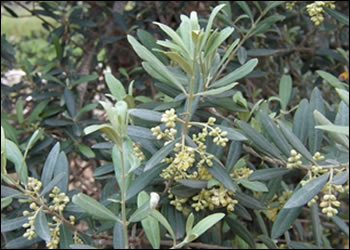
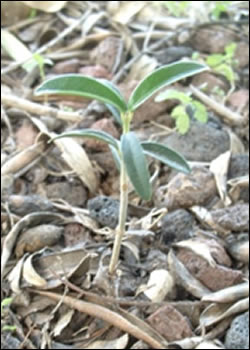
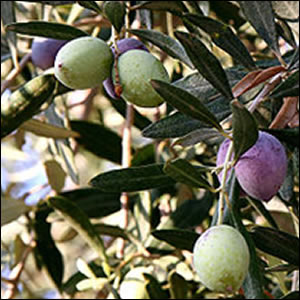
The olive's adaptability and robustness is surprising; it grows very well here if you start with the right variety and provide for the plant's simple needs. There is a myth that olive trees are not frost hardy and are frequently suggested as indoor bonsai. It is the very nature of creating bonsai that is stressful to any plant. Olive, by its very characteristics, is more adapted to stress than very many others. In its native environment it endures extreme heat and blazing sunshine, long periods of drought and frequently on upper slopes with very low temperatures in winter. The only thing it cannot cope with is cold and wet combined; that never happens to it in nature, very cold and dry is fine, not cold and wet – treat in as you would an alpine and it will be fine.
You can start with a bare stump with amazingly little root and have an exhibition quality bonsai tree in no more than ten years. Not many other varieties will do that; these trees are very hardy.
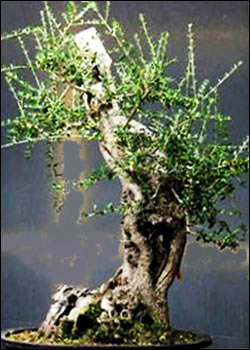

Collected olives on sale in nurseries
With tiny leaves, vertically growing shoots and quite spectacular bark and natural deadwood, they are a bonsai growers’ dream tree. Many have been collected from the wild in coastal regions.
Olea sylvestris, is a sub species, a small-fruited wild olive of the Mediterranean region. Medium size dark green shiny leaves generally with a slightly looser growing habit.
Olea europaea, is the primary type of olive cultivated for fruit production. Many have come from old olive groves; they have larger, more oblong grey leaves, very loose habit and are tolerant of most conditions.
For bonsai, much of the success required with olives is about selecting a good plant to start with. As a general rule the smaller the leaf the faster the growth rate and the better foliage density.
If you are starting out with an almost bare stump, good growth rate is important. If an olive has large leaves, it almost impossible to reduce leaf size.
The only problem with olives as already stated, is the combination of cold AND wet. The secret lies in the soil an olive bonsai is grown in. In fact it needs what we might consider a very poor quality of bonsai soil. A fibrous soil mix transfers cold into a plant very effectively. Therefore in the U.K., we need an open, very free draining growing medium. Summer watering is not really an issue due to the olives’ drought resistance. That free draining mix however, will help preserve the trees roots over winter. The drier the soil the better the cold resistance.
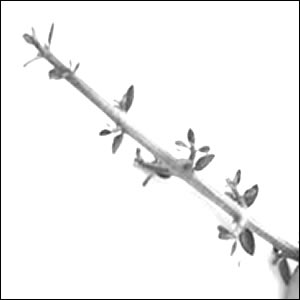
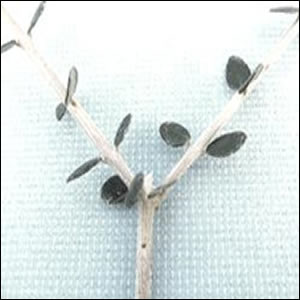
Olives have an angular growth habit, some wiring will be required
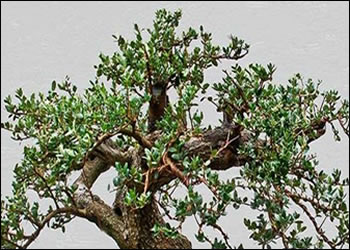

Olives have an angular growth habit, some wiring will be required
Specific instructions for Olive Bonsai
- Position in full sun
- Provide a very well drained non-loamy mix.
- Keep the bark of olives clean; algae and moss will quickly spoil the white colour and decay the craggy bark. It is just a matter of spraying the bark, and deadwood, with a suitable bark cleaner. Dilute Armillatox or ‘Bonsai Bark Cleaner & Algae Remover’, as sold by Kaizen Bonsai - just spray and leave to dry. In winter keep olives dry; this will preserve the bark and deadwood indefinitely and also help avoid fungal problems.
- There are few pest and disease problems but because of our wet climate the most likely problem will be fungal. Over winter do not allow olive leaves to remain wet in an enclosed space - this is asking for trouble. Best just to protect from overhead, open sides to allow ventilation but not rain and snow.
- Olives have a very strong angular growth habit with tough small branches. In order to shape these, bonsai wire will be required. Wiring done in summer at the same time as the first prune should set branches in position in just a few weeks. Olives are happy to be wired in early autumn after growth stops but before frost sets in, ideally in September. Olives wired at this time of year will not be fixed in position until the following year.
Always keep olives in full sun and in a well aired or windy spot in the garden. It is not heat they require to grow but bright light. Olives will not grow well in a polytunnel because the covering reduces light intensity. An olive placed in full sun outside will grow significantly in terms of extension; they do not mind windy conditions. In fact, it seems the more exposed they are the happier they will be. The number one priority for cultivating olives in the U.K. is bright sunlight.
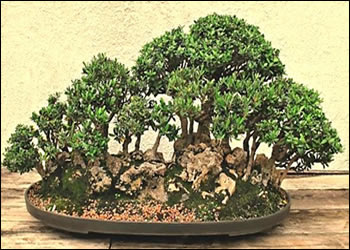

Two examples of olive groups, each over 25 years
which reflects the species’ slow rate of growth.
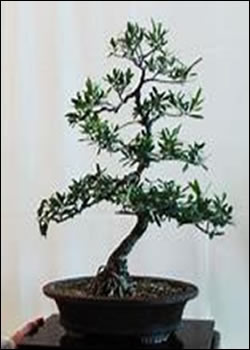
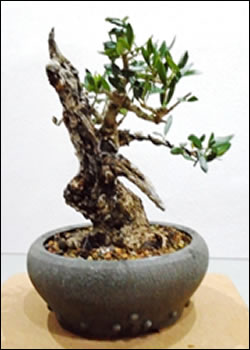
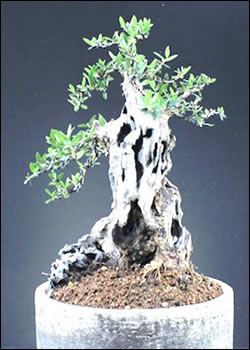
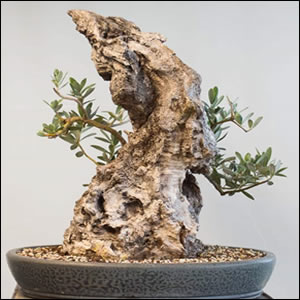
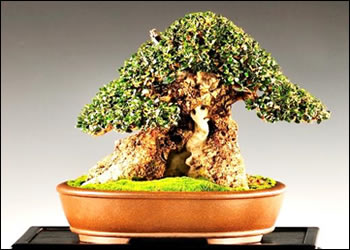
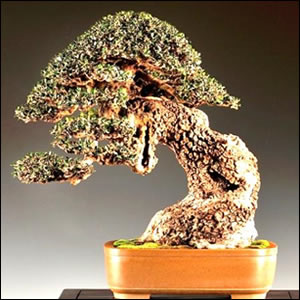
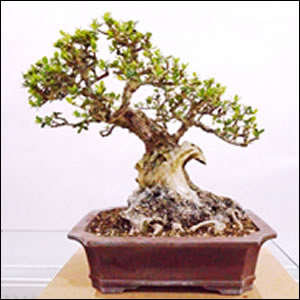
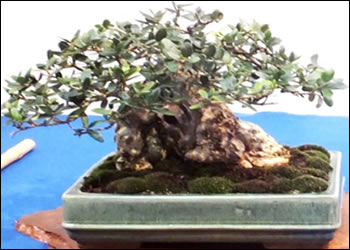
Web design: nysys